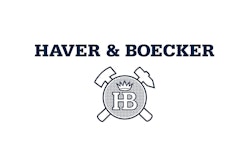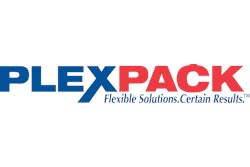Welcome back to Package This, your video guide to the world of packaging equipment! Today, we focus on pre-made bag loading and sealing equipment—machines that make packaging a huge range of products possible, from your favorite snacks to everyday hardware items.
These machines work with pre-made bags—unlike form/fill/seal systems that create bags from a roll of film that we talked about in a separate episode.
Bag and Pouch Sealing
Bag and pouch sealing equipment is one of the most common types of pre-made bagging equipment. These machines are ideal for CPG operations where bags are filled upstream and then sealed separately.
Here we see the Doboy CBS-D 750 from Syntegon running flat bags of tortillas. This unit uses continuous heat band sealing, one of many sealing methods.
Its tapered infeed makes bag loading easy, while a compression unit removes excess air for freshness. As the bag moves through the machine, a heated band seals the plastic for an airtight finish.
Syntegon’s optional DRD bag top trimmer cuts excess material for a clean, professional look.
Bag Loading, Filling & Sealing
In tight spaces—or when efficiency is key—CPGs may opt for machines that load, fill, and seal pre-made bags in a single system. These types of systems are also perfect for smaller runs or where ultra-high speeds aren’t the top priority.
This ROTO-PACKER from Haver & Boecker USA is a great example. Its seal technology is designed to produce tight, compact bags while reducing product loss. It can handle different bulk valve bag styles, including plastic and paper, with fast changeovers for flexibility.
The ROTO-PACKER supports 3 to 16 spouts—and brands can add spouts as production needs grow. This all-in-one unit boosts efficiency and reduces labor costs through automation.
Vacuum Packaging Machines
Vacuum packaging is another critical technology, especially for preserving perishable foods.
This vacuum system from PlexPack offers continuous vacuum sealing for improved throughput. It automates bag loading, reducing reliance on operators, and includes a standard PLC for easy programming.
With a filled bag on the conveyor, the machine nozzles vacuum and gas flush the package, guiding the bag top into the sealer and eliminating oxygen to preserve freshness and prevent spoilage.
Vacuum packaging is widely used for meat, cheese, and poultry, but also for sensitive items like medical devices and electronics that require airtight packaging.
Modified Atmosphere Packaging (MAP) Machines
Modified Atmosphere Packaging take preservation a step further. They inject gases like nitrogen into packages to slow bacteria growth and prevent oxidation—extending shelf life for products like meat, cheese, and coffee.
A snorkel flushes the gas into the bag, which is then sealed. MAP settings can be customized based on the product’s respiration rate and desired shelf life, giving brands control over freshness.
Bag Sewers
For heavy-duty products like pet food, potatoes, or grains, bag sewers are essential. They seal large open-mouth bags by stitching them shut with cotton or plastic thread—rather than using heat. As the bag moves through the system, the machine closes the top and sews it securely.
Bag Closers
Not all bag closers use heat or stitching. For heavy bags like bulk grains or fertilizers, other systems—like crimping sealers, plastic liner sealers, or pinch bottom glue sealers—are used.
For example, pinch bottom sealers activate a pre-glued strip that pinches the bag’s mouth together, creating a tight, secure seal for heavy-duty packaging.
From machines that seal, fill, or close pouches to systems that vacuum-pack or modify the air inside to heavy-duty bag closers—pre-made bagging equipment is essential for a wide range of industries.
Want more videos on packaging machinery and materials? Hit Subscribe on Packaging World’s YouTube channel to see the Package This playlist. And for a deeper dive into the tech we covered today and other packaging equipment, visit ProSource.org—the ultimate directory of packaging and processing suppliers, searchable by package type, material, and more.
Thanks for watching!
Welcome to Package This — in today’s video we are highlighting pre-made bag loading and sealing equipment – machines widely used by consumer packaged goods companies for countless products. This technology is used to fill candy and snacks into pre-made standup plastic pouches, put meat and cheese into flat plastic bags, and fill grains and pet food into large paper sacks.
This type of equipment is also used to bag and pouch and seal common non-food items like hardware store parts and electronics into pre-made bags.
With these machines, note that “pre-made” is the operative word when describing the type of bags they run, to differentiate them from form/fill/seal bagging systems.
Bag and Pouch Sealing
Bag and pouch sealing equipment is perhaps one of the most common types of machines in this group. These machines are the choice for CPGs with a separate bag filling machine upstream in their packaging operation.
Common sealing technologies include continuous heat, ultrasonic heat and impulse heat sealing, as well as stitching, a non-heat method. Choosing a sealing technology will depend on factors including the bagging material and size of the bag, not to mention the product.
The Doboy CBS-D 750 from Syntegon, shown here running flat bags of tortillas, is a good example of a bag and pouch sealer that uses a continuous heat method called band sealing.
The machine’s tapered infeed extension makes it easy for operators to feed bags straight into the sealer. Its compression unit removes air from the package prior to sealing to help preserve freshness. As the bag passes through the machine, a heated band seals the plastic material, creating an airtight seal. Syntegon also supplies this unit with a DRD bag top trimmer that removes excess plastic before sealing for a clean appearance.
Bag Loading, Filling & Sealing
In some cases, such as when facility space is limited or the company wants to increase efficiency in their packaging operations, brands may need equipment that can load or fill their pre-made bags and seal them on a single machine. Such bag loading, filling and sealing equipment can be manual, semi-automatic or fully automatic, depending on the level of automation required.
One advantage of this type of equipment is its flexibility. For example, CPGs might use the same machine to run several different types of plastic pouches or even paper formats on the same machine, with quick changeovers between the different runs. These bag loaders, fillers, and sealers are also an option when doing shorter runs, or where high production speed is not the main consideration.
MAP Bagging Machines
Modified Atmosphere Packaging, or MAP, is used in the food industry to extend the shelf-life of perishable food products by modifying the air inside the packaging. MAP machines use a gas flush snorkel to inject nitrogen or other gases into the package, and then close the package around the snorkel to create a modified atmosphere. This technique slows down the growth of microorganisms and delays oxidation of the food. Brands can adjust their MAP systems depending on the food type, its respiration rate, and the targeted amount of time for the shelf-life extension.
Vacuum Packaging Machines
Vacuum Packaging removes air from packaging by tightly wrapping preformed bags around perishable food products.
An operator places the bag into a vacuum chamber, where air is flushed out, eliminating oxygen and air pockets for optimal preservation of the freshness of the food. Vacuum packaging equipment is widely used on meat, cheese, and poultry packaging lines to extend shelf life, maintain flavor, and prevent spoilage throughout the supply chain. It can also be used in packaging medical devices and supplies, electronics, or any other sensitive product that requires airtight packaging.
Bag Sewers
Our next two categories are frequently used in closing and sealing large, open mouth bags.
First, bag sewers are designed to seal preformed bags by sewing threads, as opposed to most heat sealing methods. Such equipment is commonly used in sewing the open mouths of typically large, heavy-duty bags, such as pet food bags and sacks of potatoes. As a filled, open mouth bag is conveyed through the system, it passes through a closing mechanism that shuts the open mouth shut and then sews cotton or plastic thread to seal it up.
Bag Closers
Lastly, there are also other types of bag closers used in open mouth bag systems for large, heavy bags that don’t involve heat sealing or sewing. Included here are bag closers such as crimping sealers, plastic inner liner sealers, and pinch bottom open mouth glue sealers.
Pinch bottom sealers use a pre-glued seal that is activated just before sealing. Moving through the machine, the open mouth of the bag is pinched together, forming a tight seal that can secure heavy-duty bags of products like bulk grains, fertilizer, powder ingredients and related products.
From machines that modify the air inside a package or remove it… to units that fill, seal, or close stand-up pouches…to sewers and closers of large, heavy bags, these pre-made bagging loading and sealing machines run the gamut.
Want more videos on packaging machinery and materials? Subscribe to our Package This Playlist at PackagingWorld’s YouTube channel. And for a deeper dive into the technology we discussed here, visit ProSource.org, a directory with 1,000 packaging and processing suppliers. There you can search by package type, material, or features. Thanks for watching!



































